Garlic mustard (
Alliaria petiolata) is one of the most invasive herbaceous plants in woodlands of the Midwest, Great Lakes region, Northeast and mid-Atlantic states and is spreading. It thrives in the shade of deciduous tree canopies, creating a dense carpet on forest floors that shades out the native woodland wildflowers. Garlic mustard is listed as invasive by the Midwest Invasive Plant Network and the Invasive Plant Atlas in Alabama, Connecticut, Georgia, Illinois, Indiana, Iowa, Kentucky, Massachusetts, Michigan, Minnesota, Missouri, New Hampshire, Ohio, Oregon, South Carolina, Tennessee, Vermont, Washington and Wisconsin.
The most important thing you can do is to learn how to identify garlic mustard to determine if it’s growing on your property, then come up with the best control method based on the quantity and size of the infestation, and the amount of time you have to put toward controlling this plant. There are a number of shade-tolerant woodland native plants that grow in the same conditions as garlic mustard that can be reintroduced or planted once garlic mustard is removed. Find out about some of these replacements below.
Live in another region of the U.S.? Browse plants native to more regions of the U.S.
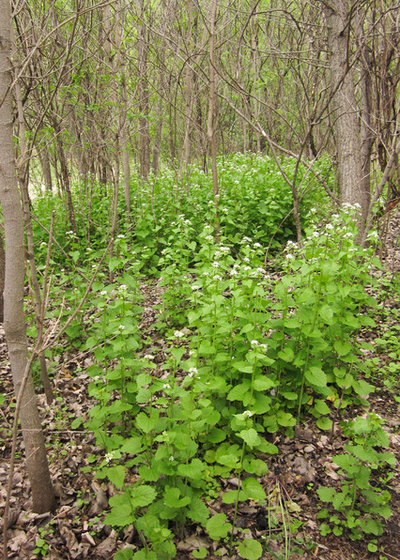
Holm Design & Consulting LLC
Garlic mustard is a biennial plant native to Europe and southwestern Asia that was introduced in North America by European settlers for medicinal purposes or as an herb and food source. Since its introduction into eastern North America about 150 years ago, it has spread westward and is now established in eastern, central and western North America.
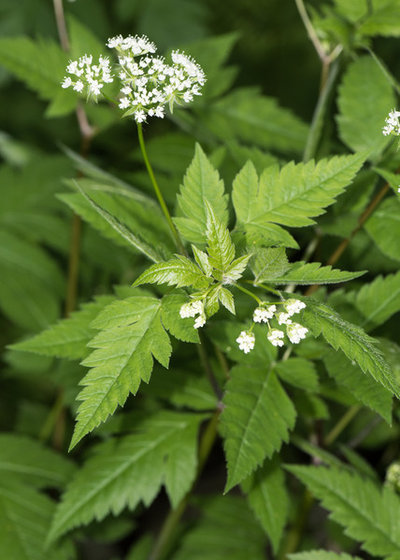
Holm Design & Consulting LLC
What to Plant Instead of Garlic MustardLongstyle SweetrootOsmorhiza longistylisNative to west-central to eastern North American woodlands, from Montana southward to New Mexico in the west, and eastward to Maine in the north and Georgia in the south; absent in Louisiana and Florida; in Canada, occurs from Alberta eastward to Nova Scotia
Longstyle sweetroot is a shade-tolerant native perennial that grows in partially shaded woodland understories and along the edges of woodlands in the same or similar sites that common garlic mustard occupies.
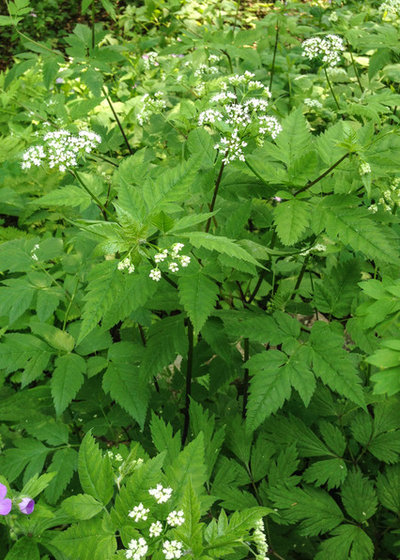
Holm Design & Consulting LLC
Longstyle sweetroot has fern-like foliage, an anise-scented root, and a tolerance for a wide range of soils and conditions.
Water requirement: Medium to dry soil
Light requirement: Partial shade to shade
Mature size: 12 to 36 inches tall and 12 to 15 inches wide
Planting notes: It can be used in any partial-shade location with moderately moist soil.
See how to grow longstyle sweetroot
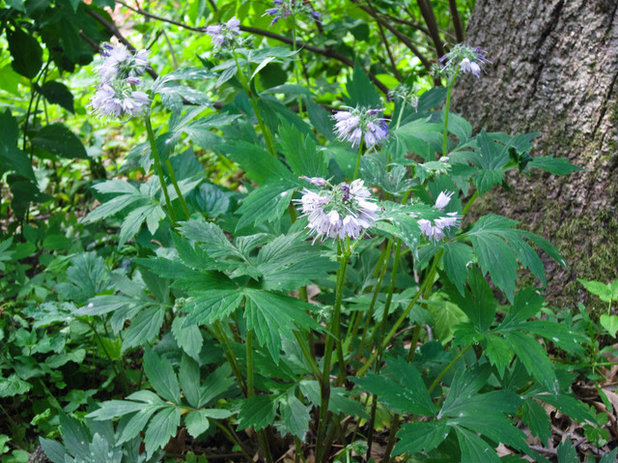
Holm Design & Consulting LLC
Virginia Waterleaf(
Hydrophyllum virginianum)
Native to eastern North America, from Manitoba, Canada, south to Oklahoma and eastward to North Carolina in the south and New Hampshire and Quebec, Canada, in the north
Virginia waterleaf is a very reliable woodland plant with a low, compact, bushy form and showy clusters of flower stalks. Its silver-spotted foliage provides a lot of interest in woodlands in early spring.
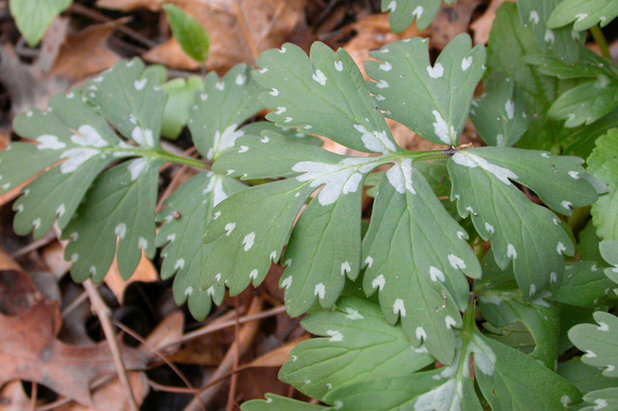
Holm Design & Consulting LLC
Water requirement: Wet-mesic to mesic-dry
Light requirement: Partial shade to shade
Mature size: 6 to 18 inches tall and 12 inches wide
Planting notes: Plant Virginia waterleaf in any shaded location (except in extremely dry soil). Mass it under trees, along the border or edge of a shade garden, or in a woodland restoration in place of garlic mustard.
See how to grow Virginia waterleaf
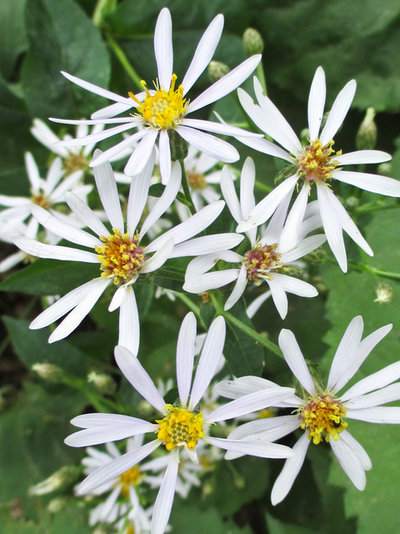
Holm Design & Consulting LLC
Bigleaf Aster(
Eurybia macrophylla)
Native to all of eastern North America, from Saskatchewan, Canada, east to Quebec, Canada, in the north and from Missouri southeast to Georgia; native range centers around periphery of Great Lakes, with occurrences through the Appalachian Mountains in cooler, higher-altitude sites
Bigleaf aster is an extremely adaptable and reliable native plant that thrives in partial shade and average soil. Common throughout the deciduous woods around the Great Lakes, it can form substantial stands of heart-shaped-leaved masses.
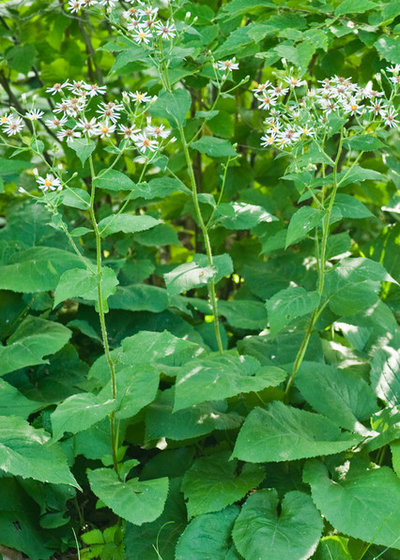
Holm Design & Consulting LLC
Water requirement: Wet-mesic to dry-mesic
Light requirement: Partial sun to partial shade
Mature size: 2 to 4 feet tall and 1 foot to 2 feet wide
Planting notes: Bigleaf aster works well in any woodland or shade garden with average soil. It is rhizomatous and forms a mass or cluster of plants. The large basal leaves are attractive in their own right throughout the spring and summer, complementing neighboring shade plants that typically flower earlier in the season.
See how to grow bigleaf aster
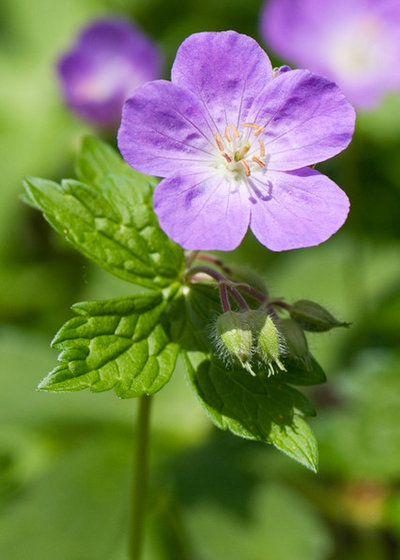
Holm Design & Consulting LLC
Wild Geranium(
Geranium maculatum)
Native from Manitoba, Canada, south to Oklahoma and eastward to Quebec, Canada, in the north and Georgia in the south
Wild geranium is a reliable and versatile mounding perennial that can grow in deep shade or partial sun at the edge of your woodland or shade garden. Profuse flowers appear in spring, complementing its deeply cut leaves.
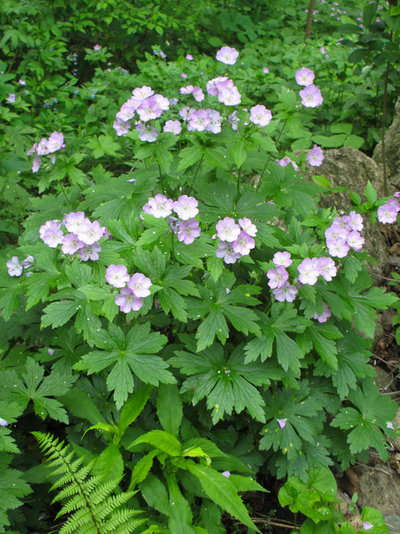
Holm Design & Consulting LLC
Water requirement: Medium to dry soil
Light requirement: Partial sun to shade
Mature size: 1 foot to 3 feet tall and 1 foot to 2 feet wide
Planting notes: Wild geranium can be used in masses under trees, along woodland edges or incorporated into any shade garden. Because it flowers later than the first spring ephemerals, such as Dutchman’s breeches (
Dicentra cucullaria), it can be planted in combination with these earlier-flowering plants to help fill the void after the ephemerals go dormant.
See how to grow wild geranium
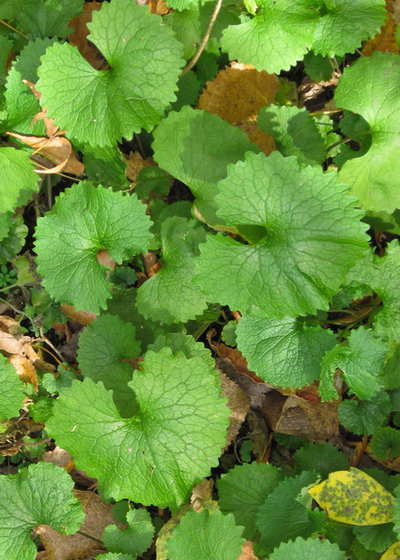
Holm Design & Consulting LLC
How to Identify Garlic MustardThe best time of year to identify garlic mustard is early spring before the native woodland wildflowers begin to emerge from the ground. Garlic mustard foliage will remain green under the snow during the winter and is easy to spot as the snow is melting. The foliage also has a strong garlic scent.
Botanical name: Alliaria petiolataCommon name: Garlic mustard
Origin: Native to Europe and parts of southwestern Asia
Distribution in North America: Predominant from Minnesota eastward to Maine in the north (including the Canadian provinces of Ontario and Quebec) and from Kansas eastward to South Carolina in the south; also present in Washington, Oregon and Montana
Habitats invaded: Woodland edges, woodland understories, shaded floodplains, old fields and gardens
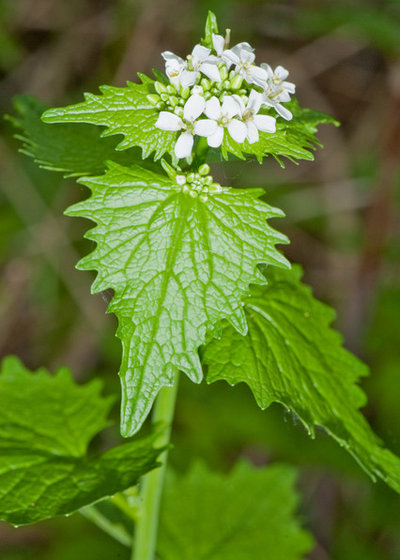
Holm Design & Consulting LLC
Form: Garlic mustard is an herbaceous biennial, meaning it has a two-year life cycle. First-year rosettes are basal and remain low to the ground. Second-year plants (with flower stalks) can reach 2 to 3 feet tall.
Flower: Garlic mustard flowers in the second growing season and has white four-parted flowers that open in late April or early May, flowering into mid-to-late June (earlier southward).
Leaf: It has bright green leaves. The basal leaves are kidney-shaped, and the flower-stalk leaves are either kidney-shaped, heart-shaped or triangular. All leaves have prominent veins and a softly scalloped edge.

Holm Design & Consulting LLC
How to Prevent Garlic Mustard From Spreading
How it spreads: Garlic mustard spreads by seed. Second-year plants with flowers produce long, narrow seedpods (siliques); each plant can produce 600 to 7,500 seeds, depending on its size and vigor. The seeds are dispersed by humans and wildlife. Seeds typically germinate in the following two seasons but can remain viable for up to five years in the soil.
Control strategies: Garlic mustard forms a substantial taproot, and this energy reserve makes the plant quite resistant to herbicide applications. Small infestations can be pulled by hand. The flower stalk at ground level is curved, so it typically breaks off at this curved point when one pulls at the plant by grabbing the flower stalk. The plant then regenerates a new flower stalk because the taproot hasn’t been removed. For this reason, to pull the plants out by hand, you need to grab the plant under the leaves at the soil surface and pull firmly but slowly. This will ensure that the stalk doesn’t break and that you will successfully remove the root. A dandelion puller can be helpful if the soil is quite dry.
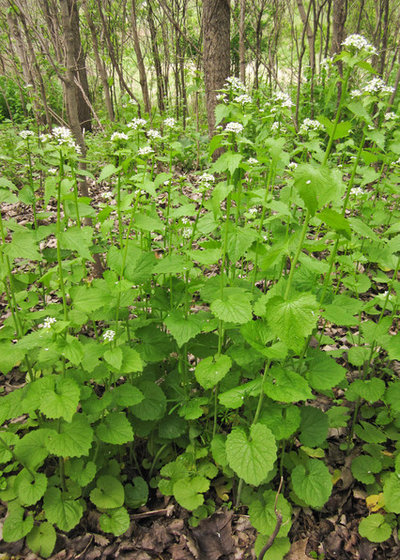
Holm Design & Consulting LLC
Removal strategies:1. Do not create any further disturbance — machinery, foot traffic, mountain bikes — where garlic mustard occurs to prevent further spread of the seed bank. If you have an isolated “island” patch, start pulling from the outside edges and work your way toward the center.
2. Remove garlic mustard after rainfall when flower stalks have formed or while the plant is flowering in early spring, before the seedpods mature. If you have a large amount that can’t be eradicated by pulling, cut the flower stalks during flowering or at the onset of seedpod development. The flower stalks need to be cut as low as possible — at ground level — for this method to be effective. Flower stalks will regenerate after cutting if the stalks are cut too high, leaving more than 2 inches of stubble. A line trimmer works well for cutting a large patch.
3. Plants that are hand-pulled and haven’t formed mature seedpods can be left in place, but make sure that the roots are propped up off the ground on a log or branch so the plants have no opportunity to reroot. If seedpods have formed, pull the plants and cut off and bag the seedpods; dispose in the garbage.
More How to Find the Right Native Plants for Your Yard
Garden-Friendly Native Alternatives to Overplanted Exotics





